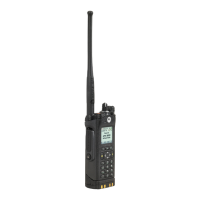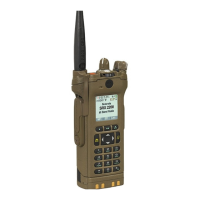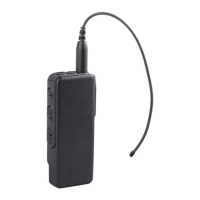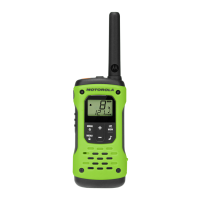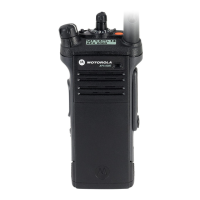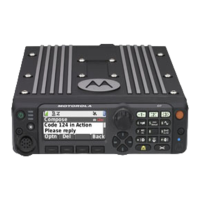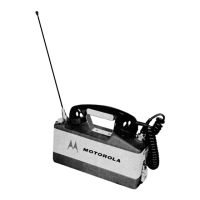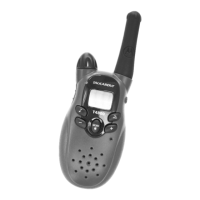
Do you have a question about the Motorola 3.5 and is the answer not in the manual?
| Brand | Motorola |
|---|---|
| Model | 3.5 |
| Category | Two-Way Radio |
| Language | English |
Information on safe usage and RF energy awareness for portable radios.
Explains how to navigate and use the user guide effectively.
Defines special notations like Warning, Caution, and Notice used in the manual.
Provides recommendations for proper radio usage and care for longevity.
Instructions on how to properly charge the radio's battery.
Steps for securely attaching the battery to the radio.
Procedure for correctly attaching the radio's antenna.
Step-by-step guide on how to power on the radio.
Identifies and labels the physical parts and controls of the radio.
Overview of controls that can be customized by a technician.
How to lock or unlock the keypad and other controls.
How to access preprogrammed radio functions.
How to input uppercase characters using the keypad.
How to input lowercase characters using the keypad.
How to input numeric characters using the keypad.
How to input hexadecimal characters using the keypad.
Explains various icons displayed to indicate radio operating conditions.
Describes icons that appear on the radio display for text messages.
Lists menu options available within the Text Messaging Service.
How to select a group of channels (zone) on the radio.
Procedures for selecting a specific radio channel.
How to quickly search for a channel by alias.
How to save frequently used zone and channel combinations to softkeys.
How to save frequently used zone and channel combinations to programmable buttons.
How to receive and respond to calls within a talkgroup.
How to receive and respond to one-to-one calls.
Explains various call features available on the radio.
Information on selective calls specific to ASTRO Conventional.
How to initiate a selective call to another radio.
How to select a talkgroup for communication.
How to access and select channels within a Dynamic Zone.
How to save a channel from a list into a Dynamic Zone.
How to make a private call using the Contacts list.
How to change the alias (name) of a contact entry.
How to change the ID (number) of a contact entry.
Feature to add/delete channels and talkgroups to priority scan lists.
How to view the members of a configured scan list.
How to initiate or stop the radio's scanning function.
What happens when a call alert page is received.
How to send an individual call alert page.
How to use TPS for normal transmissions, identifying caller.
Details of alert tones for TPS emergency feature.
How the radio sounds a beacon during an emergency.
Alert tone reminding the user that Emergency Mode is active.
Automated data application registration for the radio.
Steps for logging into the radio system.
How to access the radio's messaging features.
Step-by-step guide to composing and sending text messages.
How to add a priority status to an outgoing message.
How to view sent messages.
Feature for authenticating with username, ID, password, and passcode.
How to select secure transmission modes for voice security.
How to select clear transmission modes.
How to load encryption keys into the radio.
Allows equipping the radio with different encryption keys.
Enhances security by protecting encryption keys.
Steps to unlock the radio using a password.
How to stun another radio remotely via air command.
Procedure for stunning another radio.
Procedure to remotely disable another radio.
How GPS technology establishes location coordinates.
Information on potential GPS feature limitations.
What happens when the radio enters a predefined Geofence area.
How to view the name of the current site.
How to force the radio to change to a new site.
Steps to turn on Bluetooth via the radio menu.
Steps to turn on Bluetooth using a dedicated button.
Steps to turn off Bluetooth via the radio menu.
Steps to turn off Bluetooth using a dedicated button.
How to handle PIN authentication for pairing requests.
Voice announcements enabled even during radio reception.
Voice announcements disabled during radio reception.
How to send a Site Selectable Alert to a single site.
How to manually stop SSA alerts for a site.
How to turn the radio's Wi-Fi feature on or off.
How to view and select available Wi-Fi networks.
How to view recent incoming and outgoing call information.
Describes Tone Private Line (PL), Digital Private-Line (DPL), and carrier squelch.
Describes digital squelch options like COS, Normal Squelch, and Selective Switch.
How to enable the Transmit Inhibit feature.
Shows the remaining battery power in mAh.
Indicates the number of charge cycles the battery has completed.
How to access various radio information details.
Procedure to enter the radio's front panel programming mode.
Information on battery charge status, recycling, and disposal.
Describes the fuel gauge icon indicating low battery voltage.
Information on specific channel assignments for maritime use.
Use of VHF Channel 9 for non-commercial transmissions.
Motorola Solutions standard for wireless analog or digital conventional communications.
A feature that allows the radio to automatically scan the members of a scan list.
An open wireless technology standard for exchanging data securely.
Occurs when two devices exchange a passkey for a wireless connection.
Privately paging an individual by sending an audible tone.
Silences radio when no signal is received, opening audio circuit when signal present.
Overview of Motorola Solutions communication products.
Details the warranty coverage period for products.


